Selected Commentary

1,029,398 Cigarettes in The Huffington Post, April 5, 2017
Toward the end of Dorothy’s life, the camera once again facilitated communication and closeness. Hooked up to breathing tubes, Friedman’s mother was no longer able to speak. The camera made space for a wordless conversation between mother and son that continued until Dorothy died in 1990. Although Friedman initially expected the series to warn others about the dangers of smoking, it changed along the way to capture the relationship between mother and son, imperfect and impermanent, pulsing with tenderness and love. — by Priscilla Frank from "For 30 Years, A Son Chronicles His Mom's Heartbreaking Struggle With Cigarettes" on "1,029,398 Cigarettes."
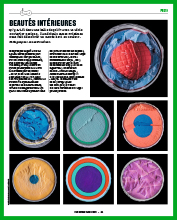
Interior Design
...Friedman is one of the most sophisticated and uncompromising photographic artists working in America. He spends very little time promoting himself and his work, and instead, apends all of his concentration on one astonishing series of photographs after another...Though he is no golfer, he was a varsity tennis champion at OSU, and sports have often informed his photographic work in unusual ways. He could not have imagined what he was to find when he carefully sawed a golf ball in half; inside was an immensely rich world of highly organized, elegantly formed materials. The beauty of its grainy and liquid textures, its geometric layers and astral shapes, and its sublime colors, is almost overwhelming. It feels silly to say so, but it is the discovery of a nirvana in a droplet, of the beauty of Dante's heaven in a commercial product intended to be consumed in trivial games. There is irony as well as optimism in finding such beauty in one inscrutable, crusty, self-effacing golf ball after another.
The golf-ball photographs are abstract; they look like Op Art, and they work that way. When hung on the wall as large photographs, they, like Ken Noland's circle paintings on view at the Columbus Museum of Art's influential Op Art show last year, generate optical activity in the retinal and optical perception in the viewer, amplifying the Paradiso effect. (One can experience these optical effects even with a small print or on a computer monitor by simply staring at the center of the picture close-up for a few seconds then slowly moving away from the picture; the effect is palpable, subtle, and unique to each viewer.) But that is just an experiential benefit and an Art World association added onto the initial attraction and ultimate satisfaction of the sheer, otherworldly beauty of these photographs. — J. Ronald Green on “Interior Design”
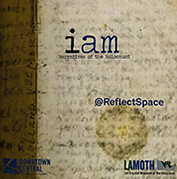
iam: Narratives of the Holocaust, 2017-2018
Works from "12 Nazi Concentration Camps" were part of "iam: Narratives of the Holocaust," an exhibition at ReflectSpace in Glendale, California.
Friedman rejects the tendency to picture these sites of depravity, torture and murder in somber black and white: instead his work explodes with color and documents the often surprisng juxtapositions of the mundane activiites at these sites in the 1980s with the historical memory of the horrors that occurred there including himself in many of the images. Friedman...forces viewers to reconsider their perceptions of these sites of unimaginable violence. — Ara Oshagan, Anahid Oshagan and Eric Hall on "12 Nazi Concentration Camps"

American Photography: A Critical History 1945 to the Present
"Spread across the center of the book, James Friedman's brilliant sequence of photographs goes beyond illustration to create its own significant meaning." — Critic Vincent Leo on "American Photography: A Critical History 1945 to the Present"
In addition to my photography being featured in the book, I designed and made the cover photograph. Also, I served, with author Jonathan Green, as picture editor selecting and sequencing over 300 photographs. The book received the Nikon Book of the Year Award.
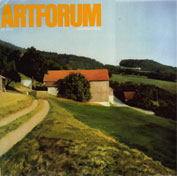
Arforum, May 1985
These pictures show not so much the banality of evil, in Hannah Arendt's phrase, as the banality of "the past"—the set of stories, necessarily semifictional and self-justifying, that we as a culture construct from historical events, no matter how horrendous, to explain how we got where we are today. — Charles Hagen on "12 Nazi Concentration Camps"
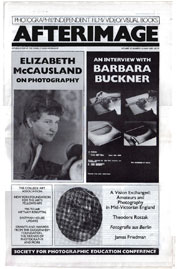
AfterImage, May 1985
Friedman has, in effect, merged genres and transposed conventions. He took a subject of great social concern—a subject usually reserved for the analogic realism of the straight photograph—and photographed it using the self-referential conventions usually applied to subjects of a more private or personal nature. — Vincent Leo on "12 Nazi Concentration Camps"
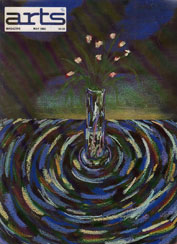
Arts Magazine, May 1983
As Friedman photographs, then, an irony prevails over the collision of visual fact, the artist's distant but omnipresent sensibility, and the viewer's own visual recollections and expectations of concentration camp imagery. The impact of these images strikes profoundly on visual, intellectual, and emotional levels, engaging the viewer in a provocative and valuable dialogue. — Susan Harris on "12 Nazi Concentration Camps"
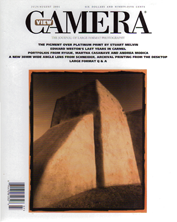
View Camera, July/August 2001
The photographs do not represent the horrors we have come to know from post-war black and white photographs, but are from everyday life and places that have become well attended tourist attractions. — Greg Erf on "12 Nazi Concentration Camps"

Celebration of Creativity: OAC Fellowships 1980-2005
James Friedman, interested in the hidden high-tech design of modern golf equipment, takes golf balls and cuts them in half for his "Interior Design" series. The resulting large-scale color photographs contain unpredictable formal and metaphorical elements, characteristics that he also admired in the work of his mentors Minor White and Imogen Cunningham. Friedman also explores the visual representation of post-industrial technology. — Kay Koeninger on "Interior Design"

12 Nazi Concentration Camps
(James) Friedman's "12 Nazi Concentration Camps" is arguably the most significant body of photographic work on the concentration camps in the post-Holocaust era... — Dora Apel, Ph.D., author of "Memory Effects: The Holocaust and the Art of Secondary Witnessing" and W. Hawkins Ferry Chair in Modern and Contemporary Art History, Wayne State University, Detroit, Michigan
I saw Jim Friedman's photographs and was deeply moved. — Elie Wiesel, Holocaust survivor and Nobel Peace Prize winner on "12 Nazi Concentration Camps"
James Friedman...took the largely unprecedented step of documenting post-Holocaust era Nazi camps in color... — Sarah Rose Sharp, from Hyperallergic on "12 Nazi Concentration Camps"